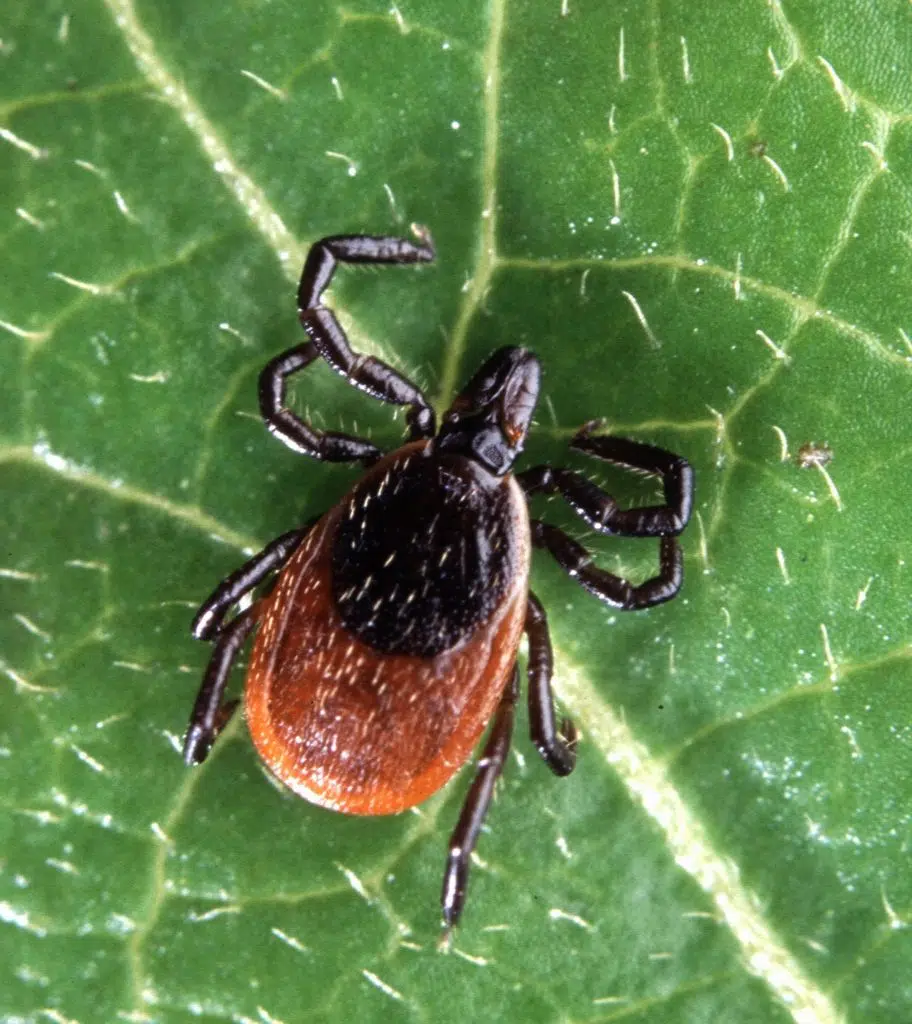HKPR HEALTH UNIT SUBMISSION
If you are starting to put stuff away for the winter, keep the bug spray handy – at least for a few more weeks – and be extra watchful for unwanted hitchhikers.
The Haliburton, Kawartha, Pine Ridge District Health Unit warns the risk of Lyme disease is still present until near-freezing conditions set into the area. That’s because blacklegged (or deer) ticks that can carry the bacteria that causes Lyme disease remain active until temperatures drop and remain near the freezing mark.
“Blacklegged ticks are still very active in fall and in need of a ‘blood meal’ to get them through the next part of their lifecycle,” says Richard Ovcharovich, Manager of Environmental Health, with the HKPR District Health Unit. “With more people hiking trails, getting out to enjoy the fall colours, or readying for hunting season, the risk of encountering blacklegged ticks is increased too.”
Blacklegged ticks will settle on tall grasses and bushes, acting like hitchhikers until they can attach to a passing person or animal. Once attached, ticks will feed on the host’s blood. If the blacklegged tick is infected with the Borrelia burgdorferi bacteria that causes Lyme disease, it can pass the disease onto a person – especially if it has fed for more than 24 hours.
Lyme disease is a serious illness that includes symptoms like: skin rash, fever, headache and muscle/joint pain. In more serious cases, Lyme disease can lead to recurring arthritis, neurological problems, numbness or paralysis – especially if left untreated. If detected early, Lyme disease can be successfully treated with antibiotics.
“Blacklegged ticks are one hitchhiker you want to avoid,” Ovcharovich notes. “To reduce your risk, stay on trails if walking in the woods, wear closed footwear and socks, put on long pants and a long-sleeved shirt, use insect repellent with DEET, and thoroughly check yourself and family members for ticks each time you have been outside.”
When checking for ticks, pay close attention to the groin area, scalp, ankles, armpits, naval and behind ears/knees. Consider taking a shower as soon as you can to wash off any ticks. According to Ovcharovich, checking for ticks should also extend to pets. “Dogs, cats and other pets can carry ticks that spread Lyme disease,” he says. “While you cannot be infected directly by a dog or cat, pets can carry ticks into your home or yard putting you at risk. It’s best to put tick and flea collars on pets and, from time-to-time, check dogs and cats for the presence of ticks. Speak to your veterinarian if you have any concerns.”
What should people do if they find a tick on them? The Health Unit recommends the following:
Promptly and properly remove a tick from your body to prevent infection. Using finely-tipped tweezers, grasp the tick as close to your skin as possible. Pull it straight out, gently but firmly being able to remove the entire tick (head and all). Thoroughly clean the bite site with rubbing alcohol and/or soap and water. In areas not identified as high-risk, ticks can be dropped off at the Health Unit or your health care provider for testing. This is done for surveillance purposes to see if the ticks can transmit Lyme.
See a health care provider right away if the tick has been attached for more than 24 hours or if it is engorged (this means it’s been feeding for some time). You should also get help if you experience symptoms of Lyme disease.







